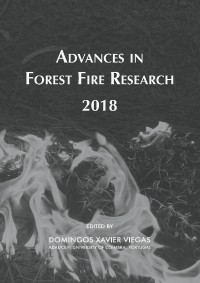Please use this identifier to cite or link to this item:
https://hdl.handle.net/10316.2/44528| Title: | Protecting lives and property: testing tanker crew protection systems | Authors: | Bessell, Rachel Nichols, David Leonard, Justin Cruz, Miguel G. Slijepcevic, Alen |
Keywords: | firefighter safety;vehicle crew protection;vehicle entrapment;burn over | Issue Date: | 2018 | Publisher: | Imprensa da Universidade de Coimbra | Journal: | http://hdl.handle.net/10316.2/44517 | Abstract: | Vehicle entrapment and fire burn over is a life-threating situation for fire fighters. In Australia, significant crew protection research commenced following the 1998 Linton wildfire (in Victoria, Australia) where five CFA volunteers perished when their tanker was entrapped and burnt over. Since the Linton fire burn over, CFA crew protection research has aimed to reduce the probability of loss of life in a tanker burn over. This involves increasing the number of protection layers between fire fighters and the fire including: personal protective blankets, drop-down radiant heat shielding and water spray deluge systems with pump protection. From 2004 to 2017, a series of experimental burns were conducted to test the safety of fire fighters in tankers. Initial system validation tests were conducted in a gas-fuelled flame front simulator at Mogo, New South Wales, Australia. Subsequently, successful field validation tests were conducted in forested environments at low intensities. This successful testing resulted in all new CFA medium to heavy tankers (upwards of 2000 litre water capacity) being fitted with a crew protection system from 2006, and all existing tankers retro-fitted from 2013. Due to restricted water capacity, ultra-light tankers (less than 800 litre water capacity) need a different system. Two new water enhancing methods were designed and tested, a Compressed Air Foam System (CAFS) and a polymer gel system. In March 2014, the medium tanker and gel ultra-light crew protection systems were tested in grass fire field experiments in Wangaratta, Victoria; both crew protections systems met survivability objectives. In March 2017, a high intensity experimental fire was conducted in Brucknell, Victoria, in order to validate the crew protection systems retrofitted onto a CFA medium tanker and to test the two new water enhancing methods on two ultra-light tankers. The Brucknell fire had an average intensity of 19,000kW/m2 (twice that of the Linton wildfire) with a peak intensity of 31,000kW/m2. All crew protection systems met survivability objectives. Ten years since the 1998 Linton wildfire, on 7 February 2009, Victoria experienced unprecedented extremes in fire weather resulting in the Black Saturday wildfires. 173 people perished, over 2000 properties were lost and over 430,000 hectares were burnt. Of the hundreds of fire fighting vehicles involved, a number were caught out in burn over situations, yet no fire fighters were seriously injured. This remarkable result can be credited to the tanker crew protection systems. | URI: | https://hdl.handle.net/10316.2/44528 | ISBN: | 978-989-26-16-506 (PDF) | DOI: | 10.14195/978-989-26-16-506_11 | Rights: | open access |
| Appears in Collections: | Advances in forest fire research 2018 |
Files in This Item:
| File | Description | Size | Format | |
|---|---|---|---|---|
| protecting_lives_and_property.pdf | 1.04 MB | Adobe PDF |  |
Items in DSpace are protected by copyright, with all rights reserved, unless otherwise indicated.
